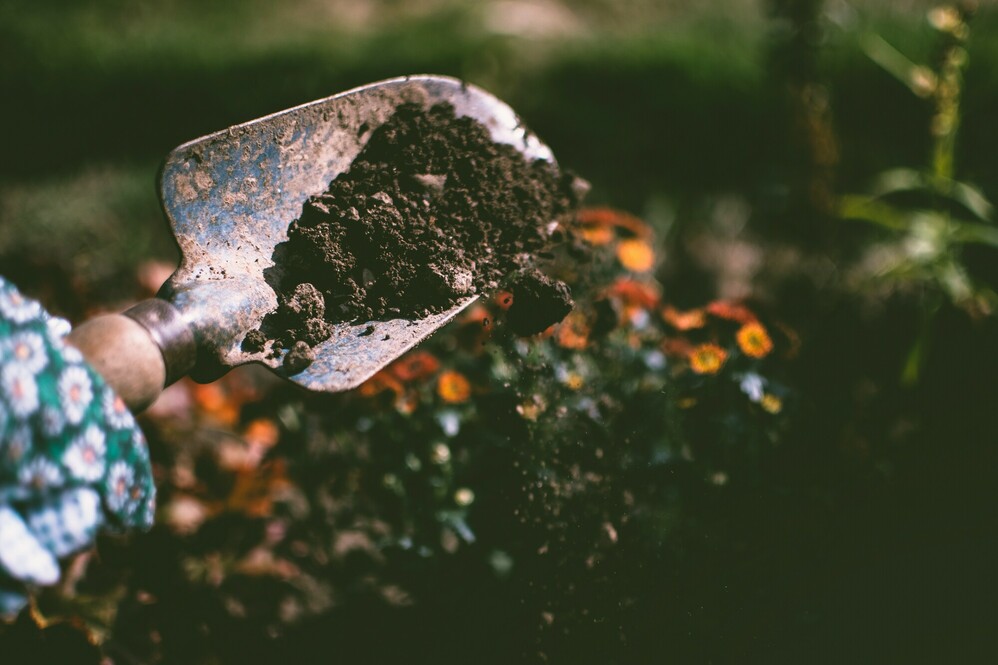4 Steps to Start Composting

Hi everyone!
As the weather gets warmer and we move into spring, I get more and more excited about spending more time outdoors in the sun. I’m not much of a green thumb (in fact, I’m notoriously bad at caring for my plants) but when I think spring I think gardens and compost.
Whether you’re interested in waste reduction (literally reducing the amount of food waste that your household contributes to Edmonton’s waste management plants) or in developing good compost for you to use in your personal garden, composting is an extremely rewarding way for you to manage waste and contribute to the earth. Cultivate good soil and a sense of ownership; do it for yourself! Composting is a great way to open your eyes to how much food waste you produce, what kinds of foods you’re eating, and makes you more self-sufficient and in-touch with creation.
Here are 4 steps to get you started on backyard composting! If you don’t have a backyard, consider vermicomposting, which can be done indoors.
- Step 1 – Container
Before you start composting, you need a good compost container. The two major options are a tall standing composter or a rotating one. Do a little research into the sizes and benefits of each, and decide which is best for you based on your compost goals. - Step 2 – Greens / Browns / Water / Air
These are your basic “ingredients” for good compost. You want to strike a balance between the four; try to aim for half greens and half browns:- Greens: These are most of your fruit and vegetable scraps. They’re high in nitrogen, and they rot easily. Your compost should be plant-based, so make sure you don’t throw any bones, oil, or dairy in there. And make sure you take the stickers off your fruits and veggies! Greens will make your compost get moving more quickly.
- Browns: These decompose as opposed to the greens, which rot. They’re high in carbon. Your browns will include things like dried grass, leaves, branches, paper, and whole grain wheat or rice. Browns will slow decomposition down.
- Water: If your compost is looking a little dry, give it some water to keep it going!
- Air: Every so often you want to give your compost a stir.
- Step 3 – Wait
Composting actually takes a long time! If you start now, you should have compost ready by the end of the summer. If you keep composting throughout the winter, it’ll be ready for your gardens one spring and summer comes around. - Step 4 – Harvest
Gathering your compost when it’s ready will depend a little on the container you have. Either way, the good stuff will have settled to the bottom. If you don’t have your own garden and are composting for waste reduction, you can donate your compost to a community garden (maybe even the King’s community garden!) or, honestly, it’s a great gift for the gardener in your life! If you’ve been composting to boost your own gardens, this is when you can start using it! Compost is great for fruit and vegetable gardening, but your house plants will love it too. You can even make “compost tea” by adding some compost to your watering can to give your plants a boost.
Composting might seem daunting, but it doesn’t have to be! If you want “lazy” backyard composting, you can throw your greens and browns in and turn it about once a month. For something more “active”, opt for the tumbler and turn it over more often.
Want some more details? The City of Edmonton has a ton of great online resources, including a PDF guide, and a drop-in location for some hands-on learning. And make sure you keep an eye on King’s Environmental Sustainability club, The King’s Keepers! They do a yearly compost workshop!
Happy Composting!
Emily